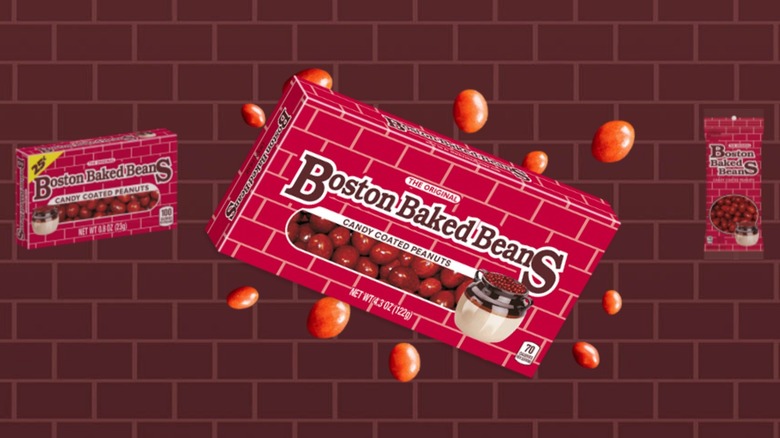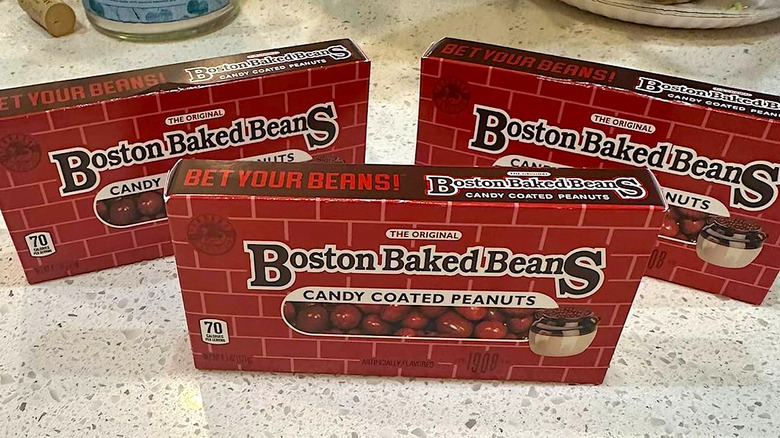The Sweet Boston Baked Beans That Have Nothing To Do With The Famous Dish
When we say Boston baked beans, we're, of course, talking about the legumes slowly simmered in a molasses-and-tomato-based sauce; a dish that predates the American Revolution. Or, maybe not. In an unexpected twist, there's a candy — shaped like beans — that has absolutely nothing to do with the savory classic. And, maybe, nothing to do with Boston either.
But first, let's set the framework and talk beans, as in the legumes. Boston baked beans trace their roots to bean-and-bacon pottage, an English dish popular in the Middle Ages. It crossed the pond with Puritan settlers who liked to have the slow-cooked meal ready and waiting for them after spending all of Sunday in worship. A century or more later — around the time Paul Revere was making his famous ride — molasses entered the picture, giving the beans a slightly sweet flavor.
That touch of sweetness brings us to a somewhat speculative connection between old-fashioned Boston baked beans (slow-simmered legumes) and Boston Baked Beans (candy-coated peanuts; think peanut M&Ms without the chocolate). Well, that and the fact that the individual candies are shaped like beans and, you know, named Boston Baked Beans. So, how did that happen? Some credit the misleading moniker to the candy-coated peanuts' resemblance to savory Boston baked beans. The fact that the confection is intentionally tinted to match the brick-red color of the slow-cooked legumes lends credence to that line of reasoning, but it doesn't account for another suspicious anomaly.
A candy by any other name
Salvatore Ferrara, an early-20th-century immigrant from Italy who settled in Chicago, is widely credited with introducing candy-coated peanuts to American consumers. A pastry chef by trade, Ferrara opened a bakery in 1908. Confetti (sugar-coated almonds traditionally given at Italian weddings) was among his first items for sale. The confection, also known as Jordan almonds, quickly developed a fan base.
Over time, Ferrara's business became more focused on candies than on pastries. He began to experiment with hard panning, an old-world candy-making process for creating a hard shell of sugar around a solid center, like a nut. In 1924, Ferrara added candy-coated peanuts to his inventory, but we can't say for sure if the candy entrepreneur ever gave the popular confection a proper name. By some accounts, Ferrara didn't begin branding products until the 1930s (Red Hots, anyone?).
Why is that important? It means any candy company anywhere could make its own version of candy-coated peanuts and no one would look askance. Which brings us to Necco. The Boston-based company has long claimed to be the original producer of Boston Baked Beans. Both stories may be true — Necco may not have invented candy-coated peanuts, but it's entirely possible the now-defunct Boston company came up with the name and branding that endures to this day. What's more, this invented-versus-branded theory of origin offers a reasonable explanation for why an Italian confection imported to Chicago ended up named after a savory bean dish with ties to Boston.

